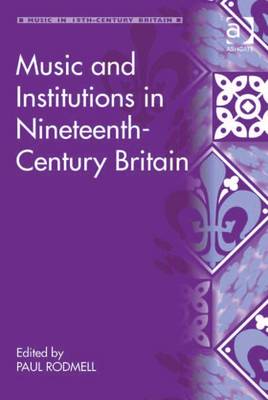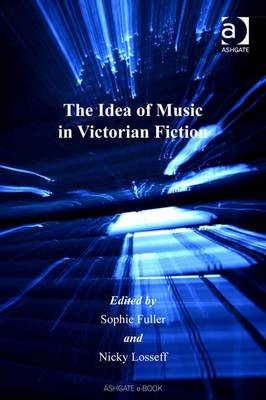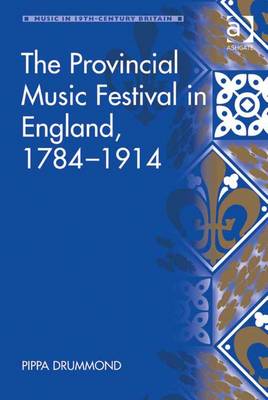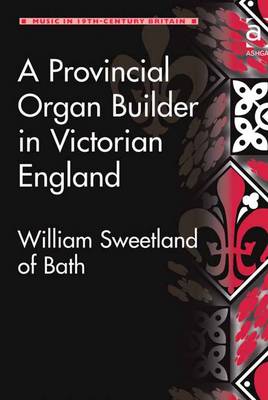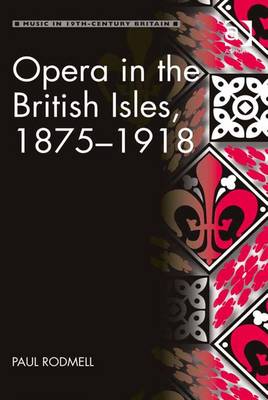Music in Nineteenth-Century Britain
7 total works
Music and Institutions in Nineteenth-Century Britain
In nineteenth-century British society music and musicians were organized as they had never been before. This organization was manifested, in part, by the introduction of music into powerful institutions, both out of belief in music's inherently beneficial properties, and also to promote music occupations and professions in society at large. This book provides a representative and varied sample of the interactions between music and organizations in various locations in the nineteenth-century British Empire, exploring not only how and why music was institutionalized, but also how and why institutions became 'musicalized'.
Individual essays explore amateur societies that promoted music-making; institutions that played host to music-making groups, both amateur and professional; music in diverse educational institutions; and the relationships between music and what might be referred to as the 'institutions of state'. Through all of the essays runs the theme of the various ways in which institutions of varying formality and rigidity interacted with music and musicians, and the mutual benefit and exploitation that resulted from that interaction.
Hamish MacCunn's career unfolded amidst the restructuring of British musical culture and the rewriting of the Western European political landscape. Having risen to fame in the late 1880s with a string of Scottish works, MacCunn further highlighted his Caledonian background by cultivating a Scottish artistic persona that defined him throughout his life. His attempts to broaden his appeal ultimately failed. This, along with his difficult personality and a series of poor professional choices, led to the slow demise of what began as a promising career.
As the first comprehensive study of MacCunn's life, the book illustrates how social and cultural situations as well as his personal relationships influenced his career. While his fierce loyalty to his friends endeared him to influential people who helped him throughout his career, his refusal of his Royal College of Music degree and his failure to complete early commissions assured him a difficult path. Drawing upon primary resources, Oates traces the development of MacCunn's music chronologically, juxtaposing his Scottish and more cosmopolitan compositions within a discussion of his life and other professional activities. This picture of MacCunn and his music reveals on the one hand a talented composer who played a role in establishing national identity in British music and, on the other, a man who unwittingly sabotaged his own career.
The Idea of Music in Victorian Fiction
The Idea of Music in Victorian Fiction seeks to address fundamental questions about the function, meaning and understanding of music in nineteenth-century culture and society, as mediated through works of fiction. The eleven essays here, written by musicologists and literary scholars, range over a wide selection of works by both canonical writers such as Austen, Benson, Carlyle, Collins, Gaskell, Gissing, Eliot, Hardy, du Maurier and Wilde, and less-well-known figures such as Gertrude Hudson and Elizabeth Sara Sheppard.
Each essay explores different strategies for interpreting the idea of music in the Victorian novel. Some focus on the degree to which scenes involving music illuminate what music meant to the writer and contemporary performers and listeners, and signify musical tastes of the time and the reception of particular composers. Other essays in the volume examine aspects of gender, race, sexuality and class that are illuminated by the deployment of music by the novelist.
Together with its companion volume, The Figure of Music in Nineteenth-Century British Poetry edited by Phyllis Weliver (Ashgate, 2005), this collection suggests a new network of methodologies for the continuing cultural and social investigation of nineteenth-century music as reflected in that period's literary output.
A history of the English music festival is long overdue. Dr Pippa Drummond argues that these festivals represented the most significant cultural events in provincial England during the nineteenth century and emphasizes their particular importance in the promotion and commissioning of new music. Drawing on material from surviving accounts, committee records, programmes, contemporary pamphlets and reviews, Drummond shows how the festivals responded to and reflected the changing social and economic conditions of their day. Coverage includes a chronological overview documenting the history of individual festivals followed by a detailed exploration of such topics as performers and performance practice, logistics and finance, programmes and commissioning, together with information concerning the composition and provenance of festival choirs and orchestras. Also discussed are the effects of improved transport and new technologies on the festivals, sacred and secular conflicts, gender issues, the role of philanthropy, the nature of patronage and the changing social status of festival audiences. The book will also be of interest to social, economic and local historians.
William Sweetland was a Bath organ builder who flourished from c.1847 to 1902 during which time he built about 300 organs, mostly for churches and chapels in Somerset, Gloucestershire and Wiltshire, but also for locations scattered south of a line from the Wirral to the Wash. Gordon Curtis places this work of a provincial organ builder in the wider context of English musical life in the latter half of the nineteenth century. An introductory chapter reviews the provincial musical scene and sets the organ in the context of religious worship, public concerts and domestic music-making. The book relates the biographical details of Sweetland's family and business history using material obtained from public and family records. Curtis surveys Sweetland's organ- building work in general and some of his most important organs in detail, with patents and other inventions explored. The musical repertoire of the provinces, particularly with regard to organ recitals, is discussed, as well as noting Sweetland's acquaintances, other organ builders, architects and artists.
Part II of the book consists of a Gazetteer of all known organs by Sweetland organized by counties. Each entry contains a short history of the instrument and its present condition. Since there is no definitive published list of his work, and as all the office records were lost in a fire many years ago, this will be the nearest approach to a comprehensive list for this builder.
While the musical culture of the British Isles in the 'long nineteenth century' has been reclaimed from obscurity by musicologists in the last thirty years, appraisal of operatic culture in the latter part of this period has remained largely elusive. Paul Rodmell argues that there were far more opportunities for composers, performers and audiences than one might expect, an assertion demonstrated by the fact that over one hundred serious operas by British composers were premiered between 1875 and 1918.
Rodmell examines the nature of operatic culture in the British Isles during this period, looking at the way in which opera was produced and 'consumed' by companies and audiences, the repertory performed, social attitudes to opera, the dominance of London's West End and the activities of touring companies in the provinces, and the position of British composers within this realm of activity. In doing so, he uncovers the undoubted challenges faced by opera in Britain in this period, and delves further into why it was especially difficult to make a breakthrough in this particular genre when other fields of compositional endeavour were enjoying a period of sustained growth.
Whilst contemporaneous composers and commentators and later advocates of British music may have felt that the country's operatic life did not measure up to their aspirations or ambitions, there was still a great deal of activity and, even if this was not necessarily that which was always desired, it had a significant and lasting impact on musical culture in Britain.

